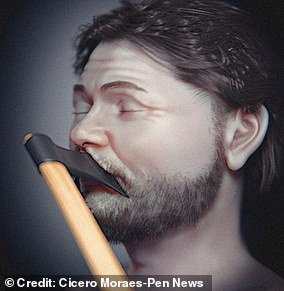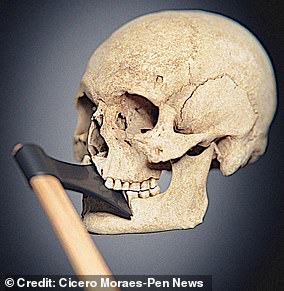Unravelling the mystery of Britain’s medieval murders: Interactive map gives a unique insight into violence in London, York and Oxford – from a deathly football match to a priest killing a man he found with his lover
>
From Geoffrey Chaucer to Thomas Becket, brutal murders – or rumors of them – shook medieval Britain.
Now, scientists have released an interactive map that sheds light In the bloodshed of the fourteenth century LondonOxford and York.
In all, 354 murders were recorded in all three cities, ranging from a deadly football match to a priest killing a man he found with his lover.
However, researchers say one city stands out above the rest.
They claim that Oxford should be called the “murder capital” of medieval Britain – largely thanks to its student population.
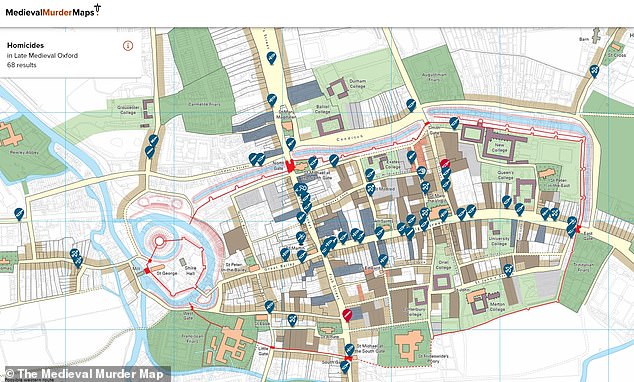
Scientists have released an interactive map highlighting 14th-century bloodshed in London, Oxford (pictured) and York

In total, 354 murders were recorded in all three cities, with Oxford the highest of all
Medieval murder map Crime scene plot based on investigations from 700 year old forensic investigations.
Users can switch between the three cities, and choose to filter homicides by gender involved, weapons used, time and day of the incident, and number of perpetrators.
Clicking on each icon will bring up a case file about that murder, with some files also including audio versions of the investigations.
Researchers estimate that Oxford’s murder rate was five times higher than London or York in the late Middle Ages.
Of Oxford murder perpetrators with a known background, 75 per cent were identified by the coroner as ‘clergy’, as are 72 per cent of all Oxford murder victims.
During this period, the clergyman is likely to refer to a student or member of the early university.
Professor Manuel Eisner, chief homicide detective and director of the Cambridge Institute of Criminology, said: “A medieval university town like Oxford would have had a deadly combination of circumstances.

The Medieval Murder Map charts crime scenes based on investigations from forensic investigations 700 years ago
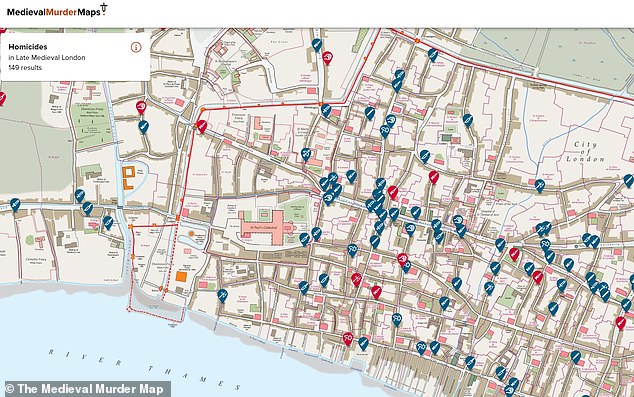
Users can switch between the three cities, and choose to filter homicides by gender involved, weapons used, time and day of the incident, and number of perpetrators.
The Oxford students were all male and typically aged between 14 and 21, the height of violence and risk-taking.
“These were young people freed from the tight constraints of family, parish or union, and thrust into an environment full of weapons, with access to bars and sex workers.
“In addition to the clashes between the town and Thobe, many students belonged to regional fraternities called Nations, an additional source of conflict within the student body.”
Based on their research, the team estimates that the homicide rate in late medieval Oxford was around 60-75 per 100,000, about 50 times higher than current rates in English cities in the 21st century.

Clicking on each icon will bring up a case file about that murder, with some files also including audio versions of the investigations
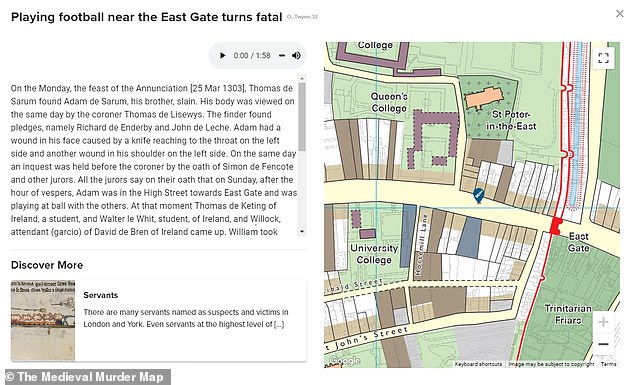
Researchers say the combination of young male students at Oxford and booze was often a powder keg for violence
The combination of young students and booze was often a powder keg of violence.
A Thursday night in 1298 saw a brawl between students in a pub in Oxford High Street leading to a mass brawl in the street with swords and battle axes.
The coroner recorded that student John Burrell had “a fatal wound on the crown of his head, six inches long and as deep as the brain”.
In another incident, a gang of students killed one of their own, David de Trembedhoy, after he brought a “prostitute” named Christiana of Worcester back to their school in the winter of 1296.
(Tags for translation)dailymail

